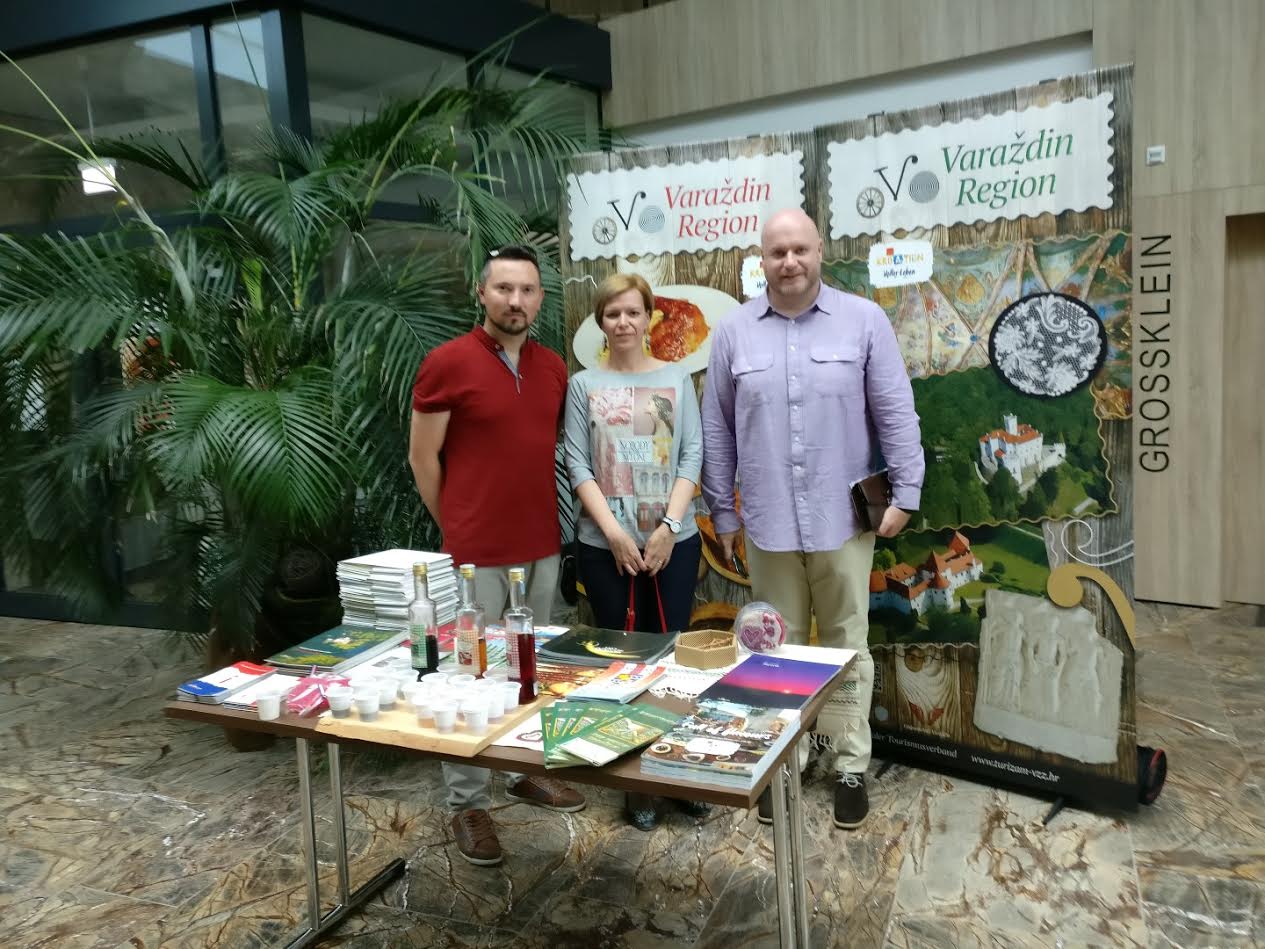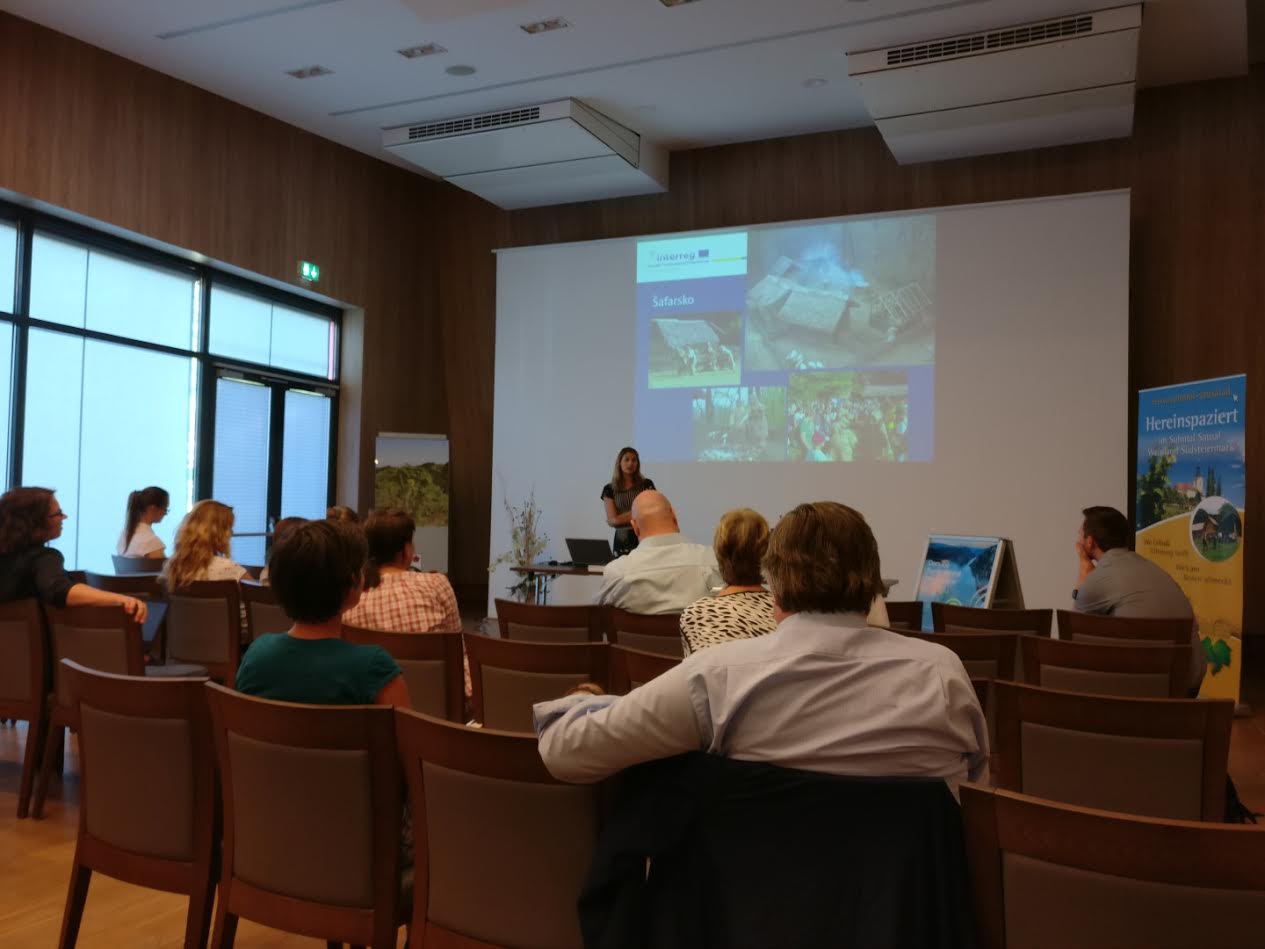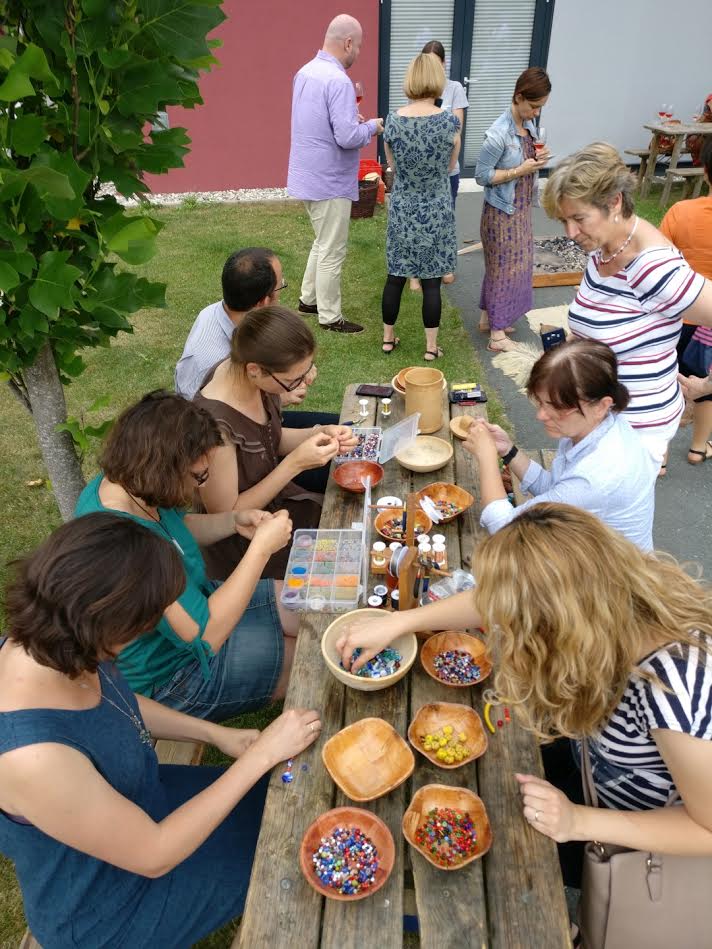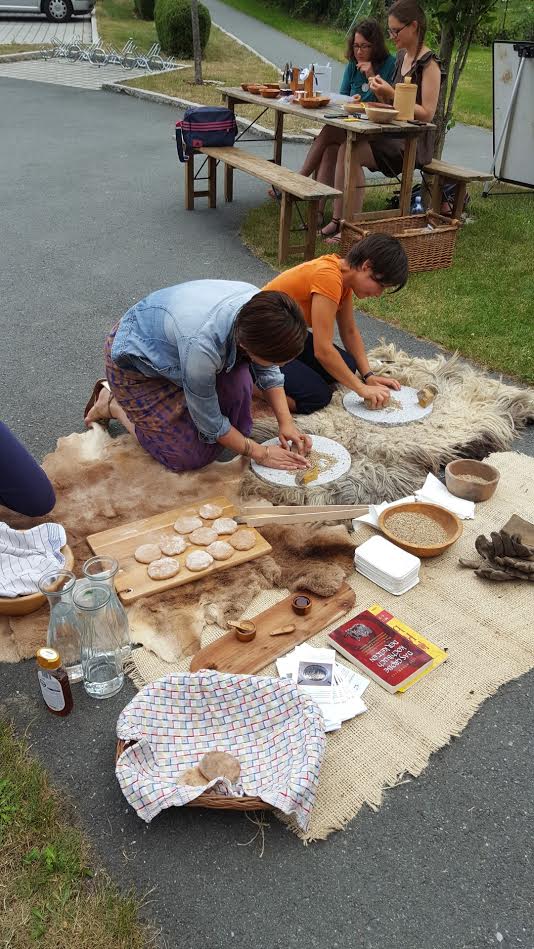We will find out what Gomila tumulus in Jalžabet contains in September.
Großklein, Austria, June 20 and 21, 2017.
As part of the international project "Monumental Landscapes of the Iron Age in Podunavlje," better known as Iron-Age-Danube, Varaždin County Tourist Board has participated in a two-day project presentation in Großklein, Austria as an associate partner of Zagreb Institute of Archaeology. A working group meeting was held on the first days of the presentation. The project partners presented their goals within this project and ways of linking the archaeological, cultural and tourist offer into a single unit. Special emphasis was put on including archaeological parks in the tourist offer properly and through harmonised methodology. During the following day, other regions included in the project were presented through various workshops of experimental archaeology, while the Varaždin County Tourist Board introduced the cultural and tourist offer of the area, and informed the audience about the tourist attractions and specifics.

The project is co-financed under the Interreg Danube Transnational Programme 2014 - 2020 and the main partners in Croatia are the Institute of Archaeology and the Archaeological Museum in Zagreb with its affiliated partners, while the agreement on project co-operation has been signed by the Petar Zrinski Primary School in Jalžabet, as well as the Jalžabet Municipality. The main objective is exploration, protection and tourist use of the most important landscapes from the Late Iron Age in Austria, Croatia, Hungary, Slovakia and Slovenia. The cultural landscapes of the Late Iron Age are characterised by elevated fortified settlements and tumuli dating from the 9th and 4th centuries BC, and characteristic of the communities that lived in the area of the Danube Region.

In Croatia, the project will be implemented at two locations: Kaptol near Požega and the world-famous site of Jalžabet in Varaždin County, where there are huge prehistoric tumuli, often referred to as 'princely' due to their impressive size. Scientific research which was carried out has confirmed that the Jalžabet tumuli were created in the 7th century BC and that they are the largest tumuli in Central Europe. Based on recent geophysical research, it was concluded that the entire environment of the 'Gomila' tumulus is an extraordinary archaeological site, so more systematic research could lead to finding other important archaeological discoveries.

Apart from archaeological research, a three-week research camp is to take place in Jalžabet as well, with the aim of popularisation and tourist valorisation of archaeology as a scientific field. During the course of the research camp, various public events and workshops will be held for school-age children, as well as popular programs for visitors, professional associates and students who will be in charge of representing and popularising the Iron Age and Archaeology as a scientific field. The public is already familiar with the intention of opening a tourist-educational-informative track in Jalžabet, which would present Iron Age to visitors and reconstruct the landscape's appearance from that time using modern technology. The Institute for Archaeology, Varaždin City Museum and Varaždin County Tourism Board are preparing the opening ceremony of the camp in Croatia on September 6 in Varaždin; the camp includes sites in Kaptol and Jalžabet, and the ceremony will be accompanied by a rich and interesting special program.

Ten project partners and nine strategic associates are involved in this important project. The aim of the project is to further develop cultural tourism and promote cultural heritage at an international, national and regional level, with Varaždin Tourist Board, aided by other project participants, playing the leading role.
Varaždin County Tourist Board
Elizabeta Dolenec, Director



